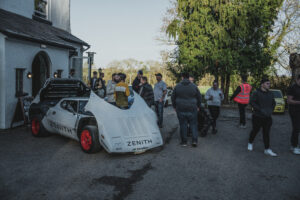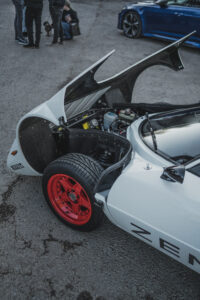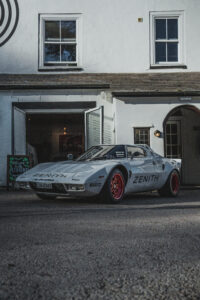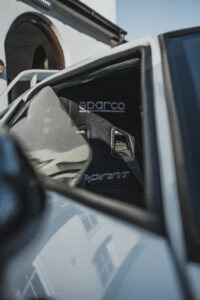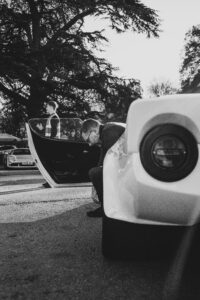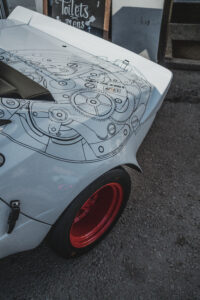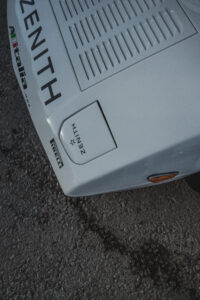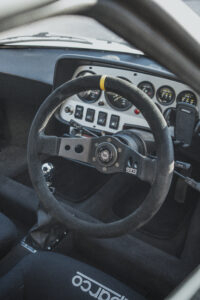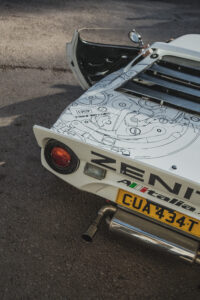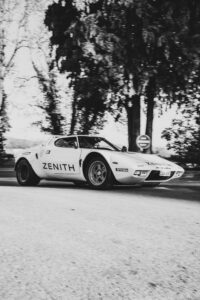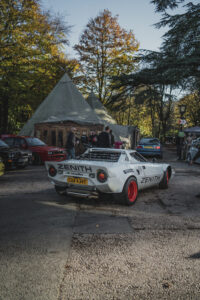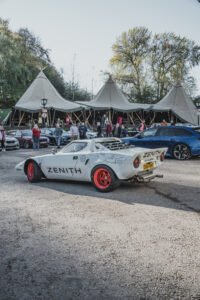This Lancia Stratos… isn’t. It’s rarer than that; a Frankenstein’s creation merging the worlds of Italian exotica, kits cars and replicas.
The world of kit cars is fascinating. There have been so many dreamers; bright-eyed people with ambitions to make their own mark on the automotive landscape, who’ve made contributions to this fascinating subsection of car culture before vanishing without a trace.
The replica car, too, is a curious thing. They’ll always have their detractors who argue that they’re unimaginative and chip away at the specialness of the original. But those who don’t mind this can get the look, sound, and feel of some legendary cars, at a much lower cost and often with a more modern, refined driving experience.
You know you’re in for something interesting when these two worlds collide. A car designed not only to ape the appearance of something far more famous, but to be home-assembled by a hobbyist, is bound to throw up a few surprises. We’re taking a deep dive into some of the dustiest, least explored corners of the great automotive library for this one.
At first glance, this is clearly a Lancia Stratos. A futurist wedge of Marcello Gandini-designed excellence, it was the first car ever designed from the ground up to go rallying. It nailed the brief, too, winning the constructors’ World Rally Championship three times on the bounce between 1974 and 1976 – the first three of a total ten for Lancia.
Closer inspection, though, reveals some clues to its real identity. It’s right-hand drive, something that none of the original 492-ish Stratoses were. That magnificent one-piece rear clamshell also opens up to reveal Alfa Romeo’s hallowed ‘Busso’ V6, rather than the Ferrari-sourced V6 that powered the Stratos.
Owing to its legendary status and spaceframe construction, which makes the design easily reproducible, replicas of the Stratos have been big business for a while. Currently, two cars – the LB Specialist Cars STR and the Hawk HF – dominate the market. This, though, is neither of those.
It’s called an Allora, a Stratos kit produced by a company named Handmade cars. Based in Bushey, Hertfordshire, the firm produced a handful of Allora kits between 1986 and 1989. Many of the oily bits were from the Lancia Beta, while the panels were all fibreglass. One of the few sites that references these cars suggests that available engines ranged from Rover to Renault to Ferrari units.
It’s thought that only 13 Allora kits were ever supplied and assembled – until 2021, that is. In 2017, a final, unbuilt kit found its way to North Wales-based Italian car specialists Allitalia, who set about building it over the next four years for James, its owner. This is that car.
The spec sheet brilliantly demonstrates the kit-car attitude of raiding parts bins for the best bits. The Busso engine, here in 3.0-litre, 12-valve form, is a popular choice for Stratos reps – being a lusty, raspy Italian V6, it’s about as close as you can get in spirit to the real thing without tearing apart a Dino 246, or indeed an original Stratos. It makes around 190bhp – coincidentally a near-identical figure to the genuine roadgoing Stratos, and plenty in a mid-engined car with semi-slick tyres, a very short wheelbase, and an almost entirely fibreglass construction.
The dials come from a Fiat 128, and the steering rack is sourced from either an Opel Kadett or Ascona. The nature of kit cars means that this Allora has become part of some sort of meta chain of Stratos replicas – the windscreen and wiring loom come from LB Specialist Cars, while the exhaust and rear suspension are from a Hawk car. There are a few traces of the Beta that gave its life for the original kit in the suspension and interior.
Is it an original design? No. Does that matter much when it looks as good as this, has the knee-weakening soundtrack of an Alfa V6 and is probably much more usable than the real thing thanks to its more modern, less highly-strung components? Almost certainly not. Besides, real Stratos values are closing in on half a million pounds. Even if you can afford that in the first place, the car would probably spend most of its life tucked up in a garage. To get those looks, that noise, that experience, for a fraction of the cost, and actually be able to get out and enjoy them? For some, this could be better than the real thing.

